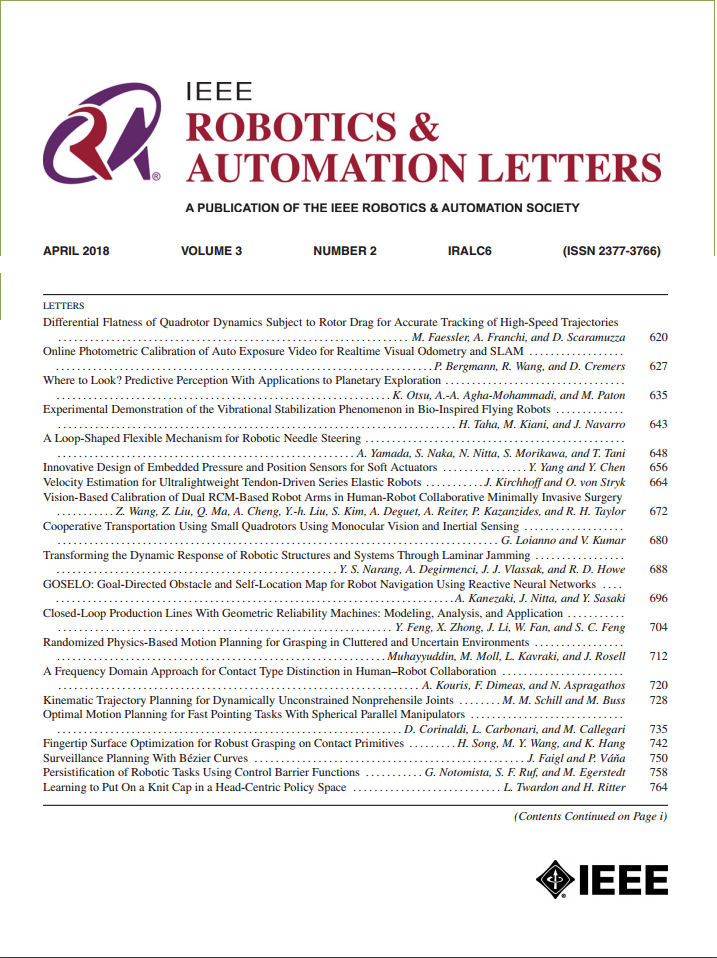基于方向能量约束的移动机械臂碰撞后安全控制
IF 5.3
2区 计算机科学
Q2 ROBOTICS
引用次数: 0
摘要
在这封信中,我们引入了一个方向感知动态能量约束(DSEC-Aware)框架,以增强碰撞后人机协作(HRC)中基于能量的安全控制。该方法采用选择性能量耗散机制,仅沿关键碰撞方向施加可变阻尼,有效减小冲击力,同时保留用户在非关键方向的运动意图。它进一步根据人机接近度动态调整能量边界,并引入多维危险指数(DI)模型,该模型结合了有效质量、接触刚度和人类容忍极限等物理参数,以进行准确的风险评估。实验结果表明,与最先进的SOTA方法相比,该策略降低了约58.04%的碰撞力,并始终保持较低且稳定的碰撞风险,从而显著提高了HRC的安全性和实用性。本文章由计算机程序翻译,如有差异,请以英文原文为准。
DSEC-Aware: Post-Collision Safety Control of Mobile Manipulators via Directional Energy Constraints
In this letter, we introduce a Directionally-aware Dynamic Energy Constraint (DSEC-Aware) framework to enhance energy-based safety control in post-collision human-robot collaboration (HRC). The method employs a selective energy dissipation mechanism, applying variable damping only along critical collision directions to effectively reduce impact forces while preserving user motion intentions in non-critical directions. It further adjusts energy boundaries dynamically according to human-robot proximity and introduces a multidimensional Danger Index (DI) model that incorporates physical parameters such as effective mass, contact stiffness, and human tolerance limits for accurate risk evaluation. Experimental results demonstrate that, compared with state-of-the-art (SOTA) methods, the proposed strategy reduces collision forces by approximately 58.04% and consistently maintains a low and stable collision risk, thereby significantly improving both the safety and practicality of HRC.
求助全文
通过发布文献求助,成功后即可免费获取论文全文。
去求助
来源期刊

IEEE Robotics and Automation Letters
Computer Science-Computer Science Applications
CiteScore
9.60
自引率
15.40%
发文量
1428
期刊介绍:
The scope of this journal is to publish peer-reviewed articles that provide a timely and concise account of innovative research ideas and application results, reporting significant theoretical findings and application case studies in areas of robotics and automation.
 求助内容:
求助内容: 应助结果提醒方式:
应助结果提醒方式:


